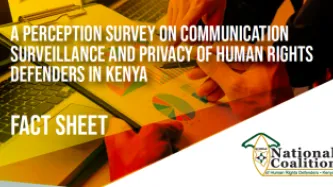Advanced Search
Content Type: App Analysis
This documentation demonstrates actions taken by the test user and the apps subsequent responses.
Test user action 1: The user taps on the application icon, which opens the application
Response from app: The application is initialised and the following data is sent and received by the app:
Immediately after the app is opened, the following data is sent to graph.facebook.com (Graph)
format: json
sdk: android
event…
Content Type: App Analysis
This documentation demonstrates actions taken by the test user and the apps subsequent responses.
Test user action 1: The user taps on the application icon, which opens the application
Response from app: The application is initialised and the following data is sent and received by the app:
Immediately after the app is opened, the following data is sent to graph.facebook.com (Graph)
Form data:
format: json
sdk: android…
Content Type: App Analysis
This documentation demonstrates actions taken by the test user and the apps subsequent responses.
Test user action 1: The user taps on the application icon, which opens the application
Response from app: The application is initialised and the following data is sent and received by the app:
Immediately after the app is opened, the app sends the following HTTP GET request to graph.facebook.com
GET https://graph.facebook.com/v2.11/174829003346?fields=…
Content Type: App Analysis
This documentation demonstrates actions taken by the test user and the apps subsequent responses.
Test user action 1: The user taps on the application icon, which opens the application
Response from app: The application is initialised and the following data is sent and received by the app:
Immediately after the app is opened, the following data is sent to graph.facebook.com (Graph)
format: json
sdk: android
event…
Content Type: App Analysis
This documentation demonstrates actions taken by the test user and the apps subsequent responses.
Test user action 1: The user taps on the application icon, which opens the application
Response from app: The application is initialised and the following data is sent and received by the app:
Immediately after the app is opened, the following data is sent to graph.facebook.com (Graph)
The following HTTP GET request is made to graph.facebook.com
GET https://graph.facebook.…
Content Type: News & Analysis
Profiling and Automated Decision Making: Is Artificial Intelligence Violating Your Right to Privacy?
Image source creative commons.
The below piece was originally posted on the UNRISD site here.
How AI is affecting our human rights
Artificial Intelligence (AI) is part of our daily lives. Its many applications inform almost all sectors of society: from the way we interact on social media, to the way traffic flows are managed in cities; from access to credit and to social services, to the functioning of our ever expanding number of devices connected to the internet.
AI is affecting our human…
Content Type: App Analysis
This documentation demonstrates actions taken by the test user and the apps subsequent responses.
Test user action 1: The user taps on the application icon, which opens the application
Response from app: The application is initialised and the following data is sent and received by the app:
Immediately after the app is opened, the following data is sent to graph.facebook.com (Graph)
The following HTTP GET request is made to graph.facebook.com
GET https://graph.…
Content Type: Press release
Consumer groups, NGOs and industry call jointly for the Council of the EU to advance ePrivacy reform
On Monday 3 December, a coalition of more than 30 consumer groups, NGOs and industry representatives sent a letter to EU Ministers and the Council of the EU calling for the conclusion of the negotiations on the reform of the ePrivacy legislation.
The letter was sent prior to yesterday's (4 December) meeting in the TTE Council, with signatories sharing concerns over the slow progress of the negotiations in the Council of the EU despite the repeated scandals that demonstrate the clear and…
Content Type: App Analysis
This documentation demonstrates actions taken by the test user and the apps subsequent responses.
Test user action 1: The user taps on the application icon, which opens the application
Response from app: The application is initialised and the following data is sent and received by the app:
The app sends the following HTTP GET request to graph.facebook.com
GET https://graph.facebook.com/v2.9/651942978220795?fields=supports_implicit_sdk_logging%2Cgdpv4_nux_content%…
Content Type: Examples
In a 2018 interview, the Stanford professor of organisational behaviour Michal Kosinski discussed his research, which included a controversial and widely debunked 2017 study claiming that his algorithms could distinguish gay and straight faces; a 2013 study of 58,000 people that explored the relationship between Facebook Likes and psychological and demographic characteristics; and the myPersonality project, which collected data on 6 million people via a personality quiz that went viral on…
Content Type: Examples
In 2018, the British army used paid Facebook messages to target 16-year-olds around the day GCSE results were announced to suggest that an army career might still be open to them if their grades were sub-par. The move was criticised for targeting teenagers at their most vulnerable and stressed moment in order to fill the army roles that require are least popular and hardest to recruit. The answer to a written parliamentary question revealed that the army spent £1.7 million advertising on social…
Content Type: Examples
In 2018, a Duke University medical doctor who worked with Microsoft researchers to analyse millions of Bing user searches found links between some computer users' physical behaviours - tremors while using a mouse, repeated queries, and average scrolling speed - and Parkinson's disease. The hope was to be able to diagnose conditions like Parkinson's and Alzheimer's earlier and more accurately. Other such studies tracked participants via a weekly online health survey, mouse usage, and, via…
Content Type: Examples
In 2018, the chair of the London Assembly's police and crime committee called on London's mayor to cut the budget of the Mayor's Office for Policing and Crime, which provides oversight, in order to pay for AI systems. The intention was that the efficiencies of adopting AI would free up officers' time by helping spot crime patterns to identify potential suspects, and examine data on seized devices. The time saved could put greater numbers of police on the streets to counter London's rising crime…
Content Type: Examples
In 2017, the head of China’s security and intelligence systems, Meng Jianzhu, called on security forces to break down barriers to data sharing in order to use AI and cloud computing to find patterns that could predict and prevent terrorist attacks. Meng also called for increased integration of the footage from the country's surveillance cameras and suggested that AI could "improve the predictability, accuracy and efficiency of social management". China is investing heavily in AI, expecting to…
Content Type: Examples
In 2018, documents obtained by a public records request revealed that the Los Angeles Police Department required its analysts to maintain a minimum of a dozen ongoing surveillance targets identified using Palantir software and a "probable offender" formula based on an LAPD points-based predictive policing formula. The Palantir software, which LADP began using in 2011, analyses data from myriad police sources that LAPD says helps target chronic offenders and lower crime rates. Critics such as…
Content Type: Examples
In 2017, the Massachusetts attorney general's office reached an agreement under which Boston-based Copley Advertising agreed to eschew sending mobile ads to patients visiting Planned Parenthood and other health clinics. In 2015, Copley's geofencing technique used location information from smartphones and other internet-enabled devices to target "abortion-minded" women and send them ads for alternatives to abortion in a campaign it conducted on behalf of a Christian pregnancy counselling and…
Content Type: Examples
In 2018, the digital marketing company Tell All Digital began marketing technology to personal injury law firms to enable them to send mobile ads to patients they know are waiting for treatment in an emergency room and for up to a month afterwards. The technology relies on geofencing, a technique for targeting people in a specific location using a phone ID derived from wi-fi, cell data, or GPS apps. Under the US Health Information Portability and Accountability Act, this type of targeting is…
Content Type: Examples
By 2018, gene studies involving more than 200,000 test takers had found correlations between 500 human genes and academic success. Based on these results, the behavioural geneticist Robert Plomin claimed that parents would be able to use consumer tests to enable "precision education", built around accurate predictions of their children's mental abilities. Even though DNA variations linked to test scores explained less than 10% of the difference in intelligence among the Europe-descended…
Content Type: Examples
Canada began experiments introducing automated decision-making algorithms into its immigration systems to support evaluation of some of the country's immigrant and visitor applications in 2014. In a 2018 study, Citizen Lab and NewsDeeply found that AI's use was expanding despite concerns about bias, discrimination, and privacy breaches, along with other human rights issues such as due process and procedural fairness. Residents lacking citizenship often have less access to human rights…
Content Type: Examples
By August 2018, the UK government's "hostile environment" policy, as set out in the 2014 and 2016 Immigration Acts and other measures, was extending the national border into the heart of services such as banking, education, health, and housing where landlords and staff have been forced to implement immigration checks. Students are a particular focus; it is harder to apply to UK universities and work after graduation, and international students must comply with stricter rules on attendance and…
Content Type: Examples
In September 2018, the US Department of Homeland Security proposed to add credit scores and histories to the list of information immigrants are required to submit when applying for legal resident status. The stated purpose of the proposed rule is to bar those who might become a "public charge" from acquiring legal residency, extending their stay, or changing their status. While credit reports do reveal information about an individual's debt, payment, and work history, they were never designed…
Content Type: Examples
In May 2018, US Immigration and Customs Enforcement abandoned the development of machine learning software intended to mine Facebook, Twitter, and the open Internet to identify terrorists. The software, announced in the summer of 2017, had been a key element of president Donald Trump's "extreme vetting" programme and expected to flag at least 10,000 people a year for investigation. ICE decided instead to opt for a contractor who could provide training, management, and human personnel to do the…
Content Type: Long Read
As our four year battle against the UK government’s extraordinarily broad and intrusive hacking powers goes to the Supreme Court, we are launching a new fundraising appeal in partnership with CrowdJustice.
We are seeking to raise £5k towards our costs and need your help. If we lose, the court may order us to pay for the government’s very expensive army of lawyers. Any donation you make, large or small, will help us both pursue this important case and protect the future ability of…
Content Type: App Analysis
This documentation demonstrates actions taken by the test user and the apps subsequent responses.
Test user action 1: The user taps on the application icon, which opens the application
Response from app: The application is initialised and the following data is sent and received by the app:
Immediately after the app is opened, the following data is sent to graph.facebook.com (Graph)
Form data:
format: json
sdk: android…
Content Type: App Analysis
This documentation demonstrates actions taken by the test user and the apps subsequent responses.Test user action 1: The user taps on the application icon, which opens the applicationResponse from app: The application is initialised and the following data is sent and received by the app:Immediately after the app is opened, the following data is sent to graph.facebook.com (Graph)format: json
sdk: android
event…
Content Type: Report
In December 2018, the National Coalition of Human Rights Defenders-Kenya published a report analysing the needs and concerns of human rights defenders (HRD) in relation to privacy, data protection and communications surveillance.
A summary of their findings is below. Access the full report on their website.
Content Type: App Analysis
This documentation demonstrates actions taken by the test user and the apps subsequent responses.
Test user action 1: The user taps on the application icon, which opens the application
Response from app: The application is initialised and the following data is sent and received by the app:
Immediately after the app is opened, the following data is sent to graph.facebook.com (Graph)
The following GET request was made:
GET https://graph.facebook.com/v3.1/97534753161…
Content Type: Financial Report
Audited accounts for the year ending January 31, 2018.
Content Type: Examples
Following the 9/11 attacks in 2001, the New York City Police Department installed thousands of CCTV cameras and by 2008 in partnership with Microsoft had built the Lower Manhattan Security Coordination Center to consolidate its video surveillance operations into a single command centre that also incorporated other sensors such as licence plate readers and radiation detectors. In 2010 as part of its Domain Awareness System, the NYPD began integrating cutting-edge video analytics software into…
Content Type: Examples
In 2011, the US Department of Homeland Security funded research into a virtual border agent kiosk called AVATAR, for Automated Virtual Agent for Truth Assessments in Real-Time, and tested it at the US-Mexico border on low-risk travellers who volunteered to participate. In the following years, the system was also tested by Canada's Border Services Agency in 2016 and the EU border agency Frontex in 2014. The research team behind the system, which included the University of Arizona, claimed the…

















